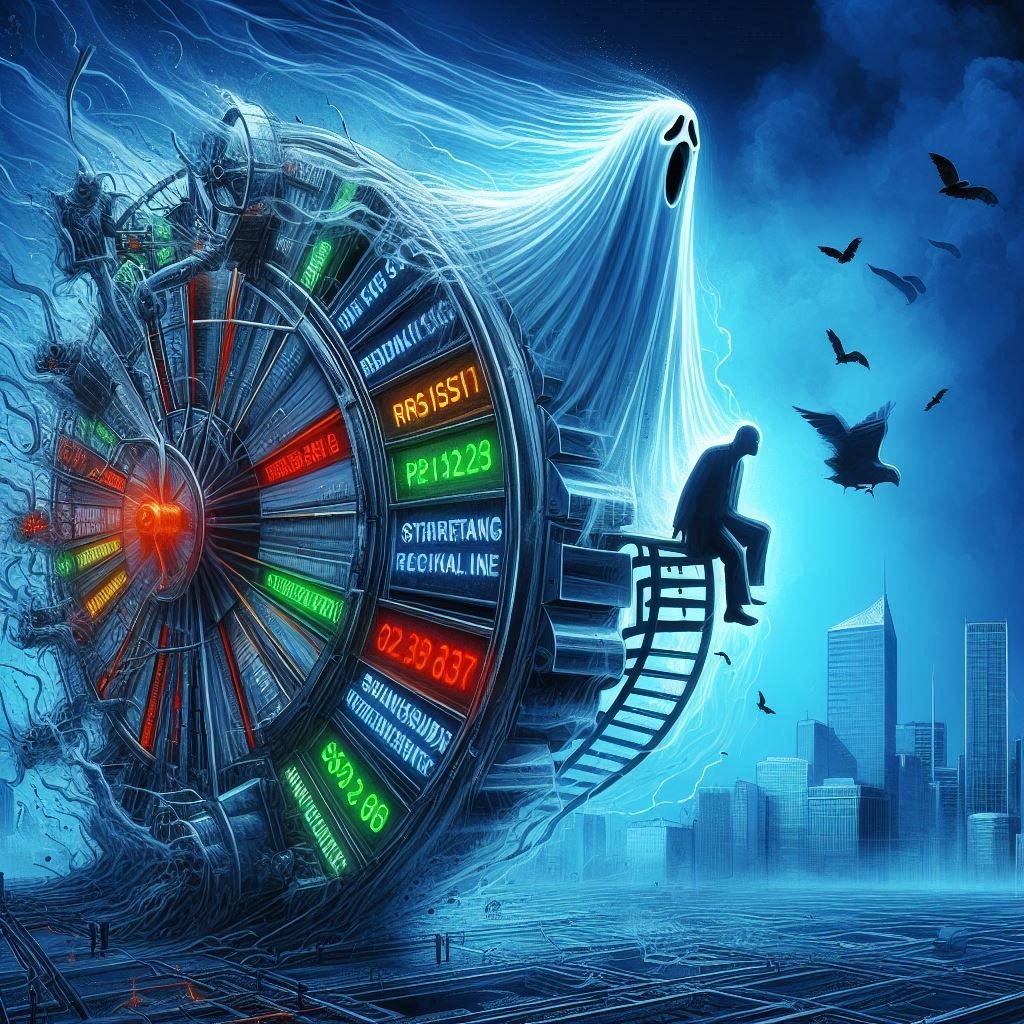Imagine you’re walking through a house. Everything looks perfect — polished floors, clean walls, organized rooms. But something feels… off. You flip on a blacklight, and suddenly the invisible stains, hidden cracks, and neglected corners reveal themselves.

That’s exactly what Shadow Risk Profiling does in the world of prop trading — it exposes the risks that don’t show up on the surface, the kind that lurk behind smooth performance charts and successful trades.
These are not the obvious risks — not the kind you plug into a Value at Risk (VaR) model or volatility calculator. No, these are the invisible risks, the behavioral quirks, micro-biases, and execution anomalies that slip past standard models like ghosts in the machine.
When the Map Isn’t the Territory
Standard risk models are like city maps. They show roads, landmarks, maybe even traffic density. But they don’t show potholes. They don’t show the shady alley where a shortcut becomes a danger zone.
In prop trading, where milliseconds matter and automation rules, relying solely on traditional risk metrics is like driving at night with your headlights off — you might stay on the road most of the time, but one unseen bend can cost millions.
It illuminates what others can’t see: not just what the system is doing, but how and why it’s behaving that way.
The Chess Player with a Flawed Opening
Imagine a brilliant chess player who wins 90% of their games. On the surface, they seem flawless. But closer inspection reveals they always open with the same two moves — predictable, habitual, exploitable.
This is exactly how a seemingly successful prop trading algorithm might harbor shadow risks. Maybe it always over-leverages in low volatility. Maybe it subtly responds to price anchors. Maybe it clusters trades near lunch hours due to legacy code behavior.
To the untrained eye, it’s invisible. To shadow risk profiling, it’s a glowing signal.
Anatomy of a Shadow Risk
Here’s what Shadow Risk Profiling looks for:
- Execution Footprints: Are there recurring slippages during certain times of day?
- Algo Bias: Does an algorithm behave differently under fast vs. slow markets?
- Risk Layering: Are small, low-risk trades compounding into systemic exposure?
Unlike conventional models that react to historical loss events, shadow risk profiling is proactive, analytical, and psychological. It audits not just performance, but process.

Why Prop Trading Needs It More Than Ever
In the cutthroat world of prop trading, where firms deploy armies of algorithms and human traders at lightning speed, perceived control can be dangerously deceptive.
A trading strategy that shows consistent gains may still be operating on flawed assumptions. A trader who seems rational may be unconsciously herding. An algorithm might be front-running itself due to timing lags.
Shadow Risk Profiling doesn’t wait for a blowup. It prevents it.
The Surgeon of Market Behavior
Think of it like this: Traditional risk management is like general medicine — it treats symptoms. Shadow Risk Profiling is neurosurgery — it maps the brain of the trading operation, identifies cognitive or mechanical distortions, and corrects them before they become fatal.
This level of insight is now considered a competitive advantage in top-tier prop trading firms.
- It informs smarter capital allocation.
- It improves model transparency.
- It helps train traders out of costly habits.
- It detects fragility in scaling strategies.
Most importantly, it reinforces resilience, which is the most underappreciated form of alpha.
Seeing the Shadows Makes You Stronger
In the world of prop trading, edge comes not just from speed or scale — but from awareness. The ability to recognize what’s hidden, the discipline to fix it, and the foresight to build systems that learn from their own shadow.
And Shadow Risk Profiling is the lens that brings those invisible dangers into view — before they ever get a chance to strike.




